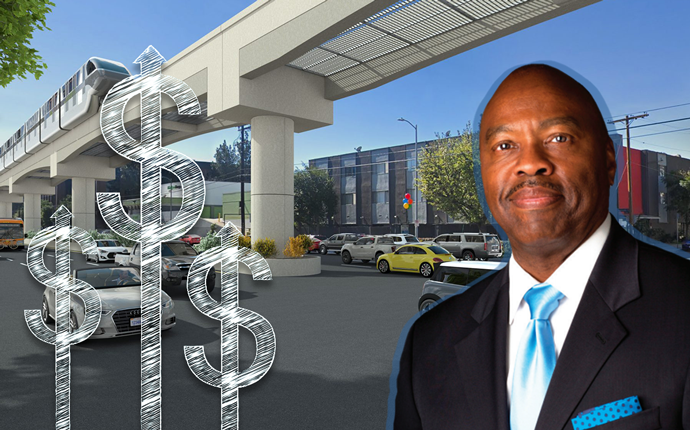Transit officials say a proposed rail connecting the west San Fernando Valley and the Westside could cost billions more than estimated three years ago.
The Los Angeles County Metropolitan Transportation Authority’s new estimate for the Sepulveda Transit Corridor project is between $9.4 billion and $13.8 billion, up from an 2016 estimate of $7.4 billion to $9.2 billion, according to the L.A. Daily News.
The project will almost certainly cost more than the Measure M sales tax funding of that Metro says the project will receive. So far, only $5.7 billion of that has been committed to the project.
Metro spokesperson Brian Haas said the agency is exploring a potential partnership with a private partner, which could reduce the public dollars needed for the rail. He added state or federal funds could be in the mix too.
And the project will be in flux until December, when Metro will hold a board meeting to present a final plan — or at least a narrowed list — after meeting with the community. At the moment, there are four options for the line, all running east of Interstate 405.
One option is an aerial rail across the Santa Monica Mountains first proposed in January. Some local residents, including the Sherman Oaks Homeowners Association, staunchly opposed that plan, according to the Daily News.
Other options include a mix of underground and aerial sections. The homeowner’s association wants a monorail along the middle of Interstate 405 instead, but Metro has said that plan isn’t feasible.
Metro aims t
o open the first leg of the project between the Valley and Westside by 2033. The line is meant to eventually connect to L.A. International Airport.
Meanwhile, city officials are drafting new transit-oriented zoning plans for parts of the Valley near the line and other transit options. Developers have proposed some transit-oriented projects there, including a 170-unit project and a 174-unit project both on Van Nuys Boulevard. [LADN] — Dennis Lynch
